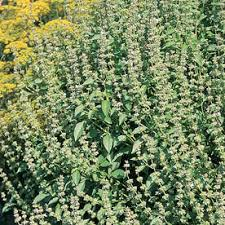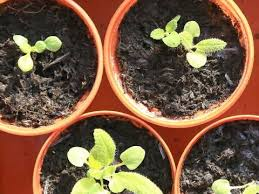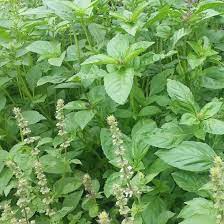Basil is a beloved herb that thrives in gardens everywhere, offering a bountiful harvest of aromatic leaves with minimal effort. While many gardeners opt for traditional sweet or Thai basil, there’s one standout cultivar you should consider: Sweet Dani lemon basil (Ocimum x citriodorum ‘Sweet Dani’). This unique variety offers an intense lemon flavor that surpasses other lemon basils, paired with a robust growth habit and superior disease resistance.
Whether used for making tea, pesto, cocktails, or in cooking, Sweet Dani will enhance your culinary creations with its distinct citrus-forward flavor. Here’s everything you need to know to grow this herb successfully in your garden.
Quick Overview
- Common Name: Sweet Dani Lemon Basil
- Plant Type: Perennial (grown as an annual)
- Hardiness Zones: 4-9 (annual), 10-11 (perennial)
- Native to: Asia (India, Pakistan, Thailand)
- Exposure: Full sun
- Soil Type: Rich, loamy, well-draining
- Soil pH: 6.0-7.5 (slightly acidic to slightly alkaline)
- Mature Size: 12″ wide, 30″ tall
- Time to Maturity: 60-70 days
- Water Needs: Moderate
History and Origin
Sweet Dani basil was developed in the 1980s at Purdue University by horticultural experts Mario Morales and James E. Simon. The pair bred various basil plants, selecting the best traits over time to create a cultivar that was both ornamental and flavorful. This unique lemon basil, named after Simon’s daughter Daniella, quickly became a favorite, known for its high citral content which imparts the lemony scent and flavor. In 1998, Sweet Dani won the All American Selections Award for its outstanding characteristics.
Growing Sweet Dani Lemon Basil
Like most basil varieties, Sweet Dani thrives in warm, moist conditions with well-draining soil. Follow these tips to grow it successfully:
- Soil: Ensure your soil is rich and loamy. If it’s too heavy or sandy, amend it with compost for better drainage and moisture retention. The soil should feel like a wrung-out sponge—moist but not soggy.
- Sunlight: Provide full sun for the best results. While it can tolerate partial sun, its growth will be less compact and leggy.
- Containers: Ideal for container gardening, Sweet Dani can be grown in pots, especially if you live in cooler climates. Dark-colored containers help raise soil temperatures, which can give your plant a head start.
- Watering: Keep the soil moist, but not waterlogged. Basil prefers consistent moisture, especially in containers where soil dries out faster.
- Planting Depth: When planting seeds, place them about 1/4 inch deep. Space plants 12 inches apart to allow room for growth.

Maintenance Tips
- Pinching Flowers: Regularly pinch off flowers to encourage leaf production. Once the plant flowers, its leaves become tougher and less flavorful.
- Pruning: Prune back stems by half when harvesting to encourage bushier growth and more leaves. This helps maintain a compact shape.
Propagation and Pests
Sweet Dani is easy to propagate from seeds, cuttings, or division. To start from seed, sow indoors in pots or trays, then move outdoors once temperatures are above 60°F and seedlings have at least four true leaves.
While Sweet Dani is relatively pest-resistant, it may encounter aphids, slugs, and fungal diseases. Thankfully, it’s less susceptible to downy mildew compared to other basil varieties.

Harvesting and Storage
- Harvesting: Snip leaves regularly to keep the plant producing new growth. Only remove up to half the stem to prevent stunting.
- Storage: Use leaves fresh or preserve them by drying or freezing. Basil loses its flavor as it ages, so it’s best to start fresh each year.
Culinary Uses
With its sweet, lemony flavor, Sweet Dani is perfect for a variety of dishes. Try it in:
- Curries and stir-fries: Adds a zesty twist to savory meals.
- Desserts: Incorporate into lemon-based treats like cheesecake or crème brûlée.
- Cocktails: Muddle leaves in cocktails like mojitos or use as a garnish for lemonade.
- Pesto: Make a refreshing lemon basil pesto to pair with pasta or drizzle on grilled vegetables.
For a unique treat, make a honey basil creamsicle or sprinkle chopped basil on Mexican street corn (elote).
Conclusion
Sweet Dani lemon basil is a must-have herb for any garden. With its intense lemon flavor, quick growth, and disease resistance, it’s a versatile and rewarding addition. Whether you grow it in your garden or container, you’ll appreciate its culinary potential and easy care. Try it today and enjoy the fresh, citrusy goodness all season long.
